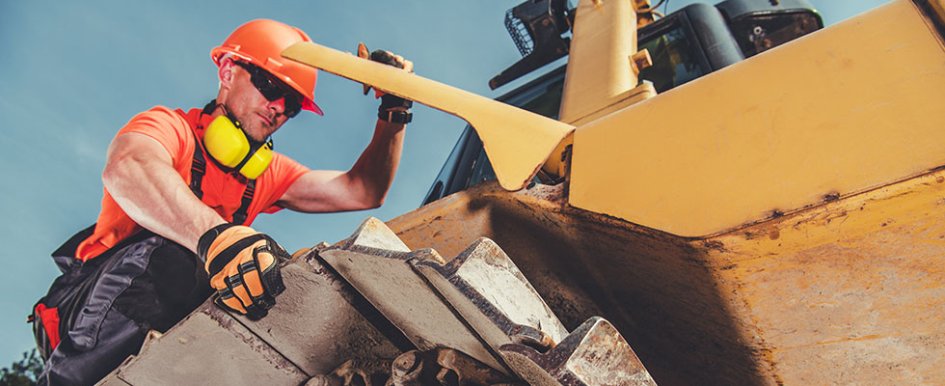
Purchasing a piece of equipment — or an entire fleet — is undoubtedly a long-term investment. Additionally, your compact loader, excavator, lawn mower and many other equipment purchases may be directly tied to your professional livelihood, making their reliability even more important to you, your business and your future. When it comes to protecting your machine investments, leveraging proactive and intentional tactics will improve the longevity and productivity of your assets.
Here are four recommendations to protect your machine investments:
1. Select Your Warranty
The warranty you place on your equipment will serve you well in the long run. A warranty can effectively reduce downtime, covering parts and service repairs while also offering higher resale value. The benefits of warranties also extend beyond tangible and physical advantages and provide owners with peace of mind.
Regardless of the type of machinery, your dealership aims to ensure the equipment you drive off the lot is durable, reliable and able to complete the toughest of jobs. However, owners know there will always be uncontrollable elements ranging from environment, weather, jobsite challenges and good old-fashioned user errors that can damage your equipment’s functionality and usability. When this happens, your jobsite productivity and efficiency is put at risk.
At equipment dealerships, there are various warranty and protection plans whether you’re buying new, used or certified pre-owned equipment. Equipment owners should talk to their dealership to understand the differences between, and benefits offered through, standard, extended or limited warranties.
Extended warranties can add an extra level of protection against unexpected repairs while offering an expanded sense of security and guarantee the best value from your machine. Extended warranties can include a variety of coverage options such as the powertrain, powertrain plus hydraulics and full machine coverage.
Should you decide to sell your equipment in the future, extended warranties can sometimes be transferred to the new owner, which enhances both the value of the machine and its sales appeal.
In addition to minimizing downtime, warranties shield owners from expensive repair costs. Having an unexpected repair can compromise your budget, which may impact your business. Investing in an extended warranty is both simple and effective when it comes to safeguarding your equipment and, ultimately, your business.
2. Make Maintenance a Top Priority
Every machine that is part of your fleet should receive regular and basic maintenance to extend its life and maximize performance. Examples of basic, ongoing maintenance include checking and tightening wheel nuts to correct torque, replacing fluids and checking belts as well as monitoring air filters, engine oil and filter, wear pads and hoses. Regular and preventive maintenance will extend the life of your machine and fleet, maximize your crew’s productivity, and help save you time and money.
In addition to performing routine maintenance, operators should also take a step back and simply look at the machine on a regular basis. Does it pass the eye test? Eliminating concerns around wear points, damage, leaks or other issues should be a daily occurrence.
Lastly, remember that your dealership is a trusted resource. The manufacturers of your machine have insight into maintenance details that you may not be privy to, which can result in quicker and more effective repairs. It is also beneficial to keep detailed service records to help technicians identify potential issues and solutions. Adopting a proactive maintenance strategy for your equipment reduces the likelihood of unplanned downtime and acts as an additional layer of protection that ensures your equipment is ready for work when it’s time to use at the jobsite.
3. Evaluate Your Jobsite
Are you bringing the right piece of equipment to the job? It may seem simple, but it is always best to match equipment to specific jobsite needs. Are there space or noise constraints that dictate the type of machine you need to use? Is the site more challenging than you realized? Would it be more beneficial to have a machine on tracks versus tires to navigate through soft or muddy conditions?
Additionally, is your site secure? Most of today’s equipment utilizes state-of-the-art technology with monitors, screens and displays. These digital features make your equipment even more valuable than before — which also makes them a convenient target for potential theft or vandalism. Ensuring your operators are locking doors, jobsite gates and access points can go a long way when it comes to protecting your equipment and attachments from the average passerby.
Fully understanding the scope of the project, the space needed to complete the work and the surrounding environment will maximize your jobsite efficiency. Considering the weight and overall size of your machinery is crucial and can be an essential factor in your jobsite performance. For example, urban jobsites present a unique set of challenges for operators and project site managers, ranging from dense populations that create heavy flows of vehicle, cyclist and pedestrian traffic to surrounding buildings, critical infrastructure and noise regulations. These types of environments may require operators to consider electric compact equipment to meet the needs of their work.
4. Use Technology to Your Advantage
Embracing technology like telematics can also aid you in your efforts to improve the longevity of your machine. Digital products can act as another pair of eyes and ears to monitor the performance, health and maneuverability of your equipment. Additionally, should you find yourself in the unfortunate situation of having your machine stolen, telematics data can help you accurately track your device and recover your stolen property.
Leveraging one — or all — of these strategies will help your business find new cost savings and improve the longevity of your machine. The investment you’ve made by purchasing equipment is a valuable one, and proactively caring for and protecting your equipment is something that you will never regret.
